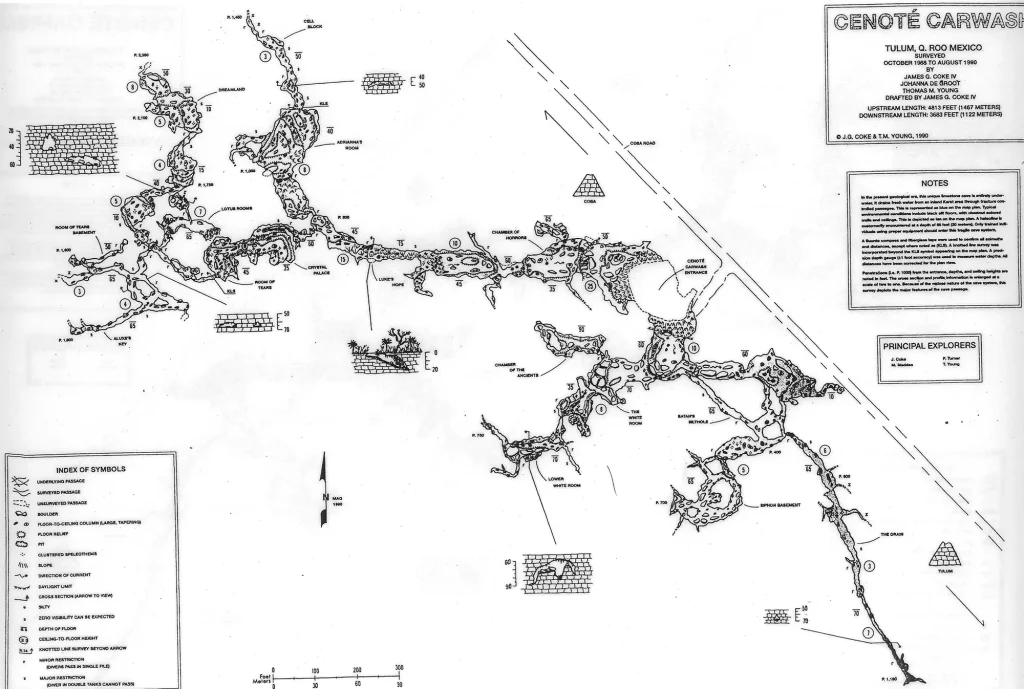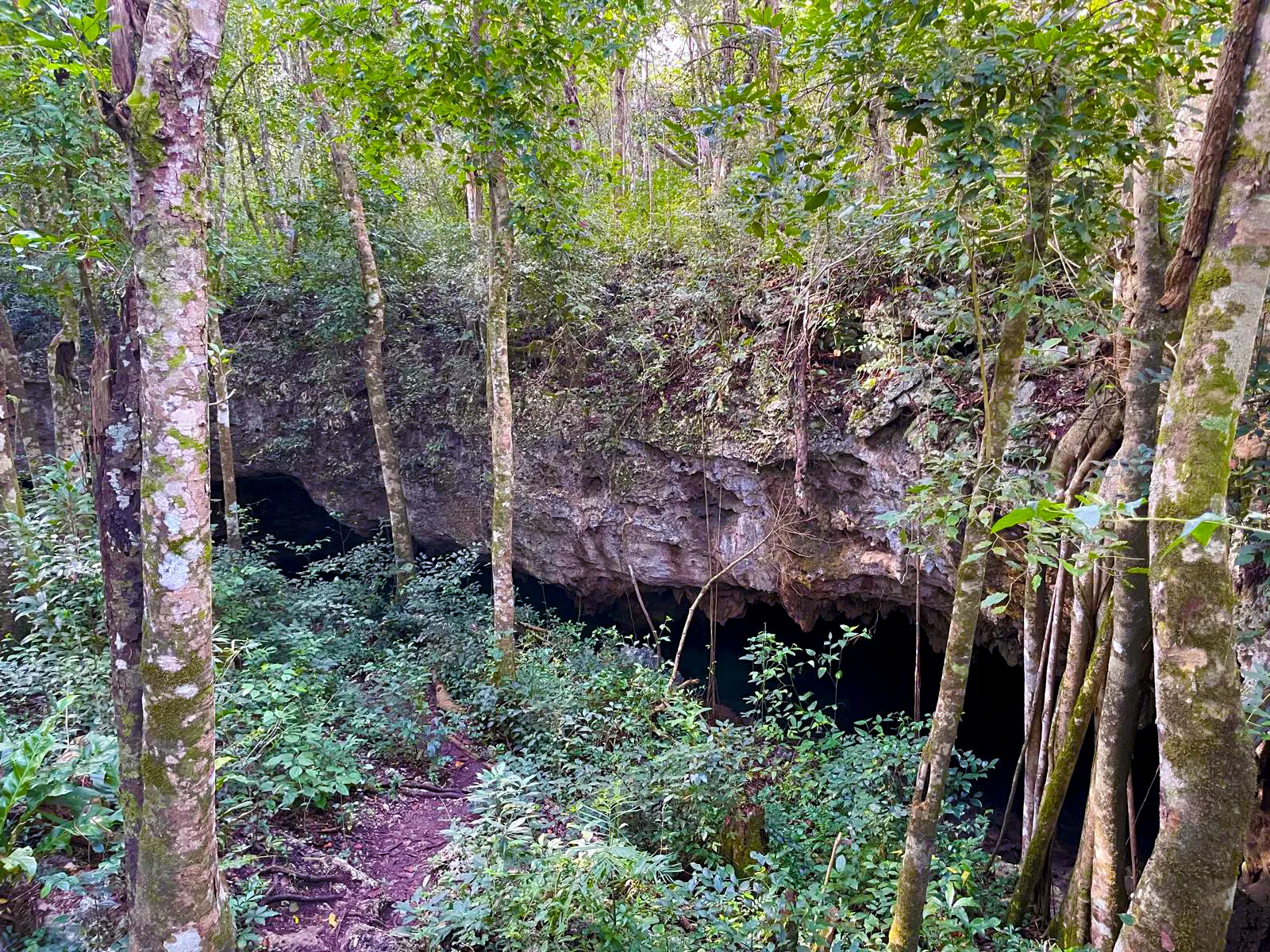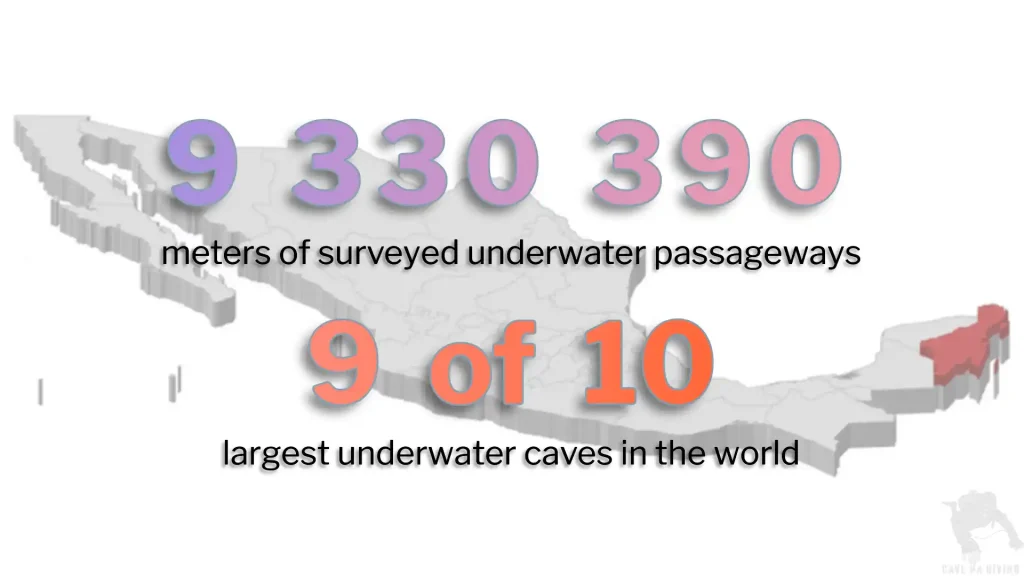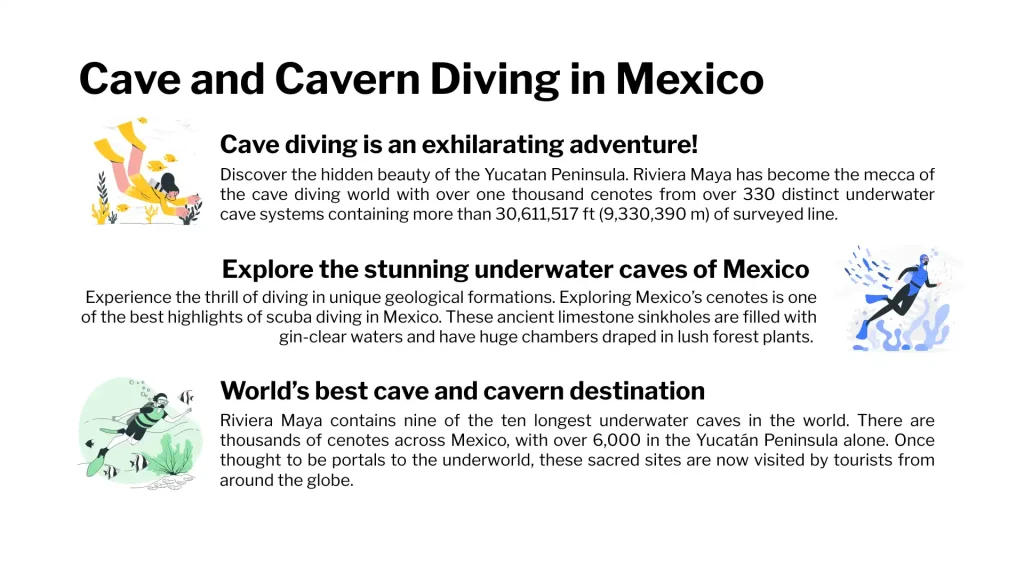Cenote Aktun Ha, also known as Carwash due to its use for washing taxi cabs along the highway to Coba, is no longer used for this purpose.
It is now a popular spot for swimming, snorkeling, diving, picnicking, sunbathing, and responsible partying. It’s located by the roadside and features a large pond, more than 150 ft (50 m) across, with an average depth of 13 ft (4 meters). A concrete path and wooden deck make it easy to enter the water. The 8 ft (2.4 m) platform allows kids and adults to enjoy jumping in.
At Cenote Carwash, owners prioritize convenience and comfort. The facilities make suiting up for divers easy, and the parking lot is just a few meters away, ensuring a hassle-free visit.
Beneath the surface of the cenote lies a world of wonder waiting to be explored. Depending on the time of your visit, you may come across a layer of algae that adds an element of mystery to your adventure. From late October to late March, the cenote transforms into a sparkling, crystal-clear swimming pool with a lush green bottom. A green algae bloom creates an intriguing and slightly eerie atmosphere from late March to late October. However, don’t let that deter you. Once you dive below the cloud, you’ll discover a mesmerizing world filled with plants, eerie submerged trees, and deep caves. Schools of various types of fish, freshwater turtles, and even one crocodile inhabit the open water part of the cenote.
Cenote Carwash cavern line map

On the west or right side, the cave going upstream drops out of sight to a depth of 49 feet (15 meters). This is where the Golden Cavern Line can be found. Divers can spot chestnut-colored columns below the shallow depths of fallen trees and roots. The light filtering through the algae layer above creates a beautiful display of varying hues.
Cave area
The main cave line, 150 feet upstream, provides easy access to attractions such as Cenote Zacil Ha (Luke’s Hope) and beyond. Various feature areas, including the Room of Tears, Adriana’s Room, the Cell Block, the White Room, the Chamber of Ancients, the Drain, Satin’s Silt Hole, and the Basement, offer diverse experiences for all cave divers.
At the downstream area, three main passages guide cave divers through yellow-green chambers with sediment on the bottom.
Most of the cave system contains fresh water, with the saltwater zone starting at 70 ft (21 m). The cave has various rooms and several upstream and downstream passageways.
Our Cenote Carwash cave diving video
Cenote Carwash cave map

Carwash Cenote location map
Parker Turner and Mike Madden were the first explorers. Others included Jim Coke, Johanna De Groot, Paul Deloach, Steve Penn, Chuck Stevens, and Tom Young.
Back




















